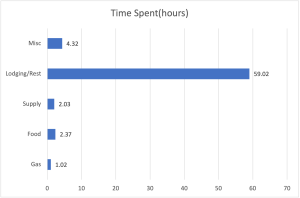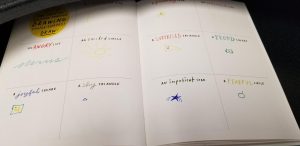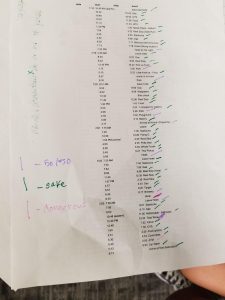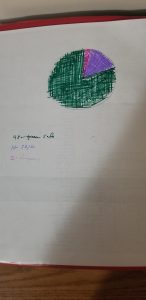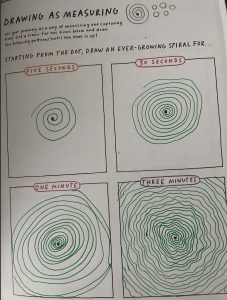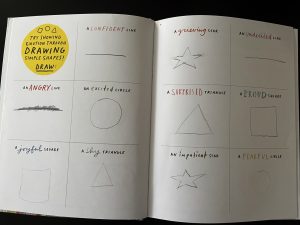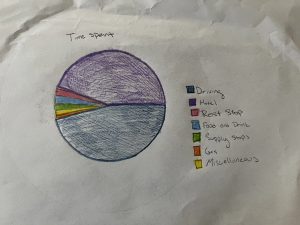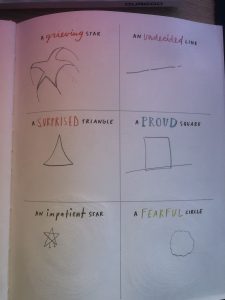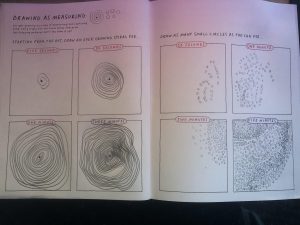I enjoyed many of the exercises in the “Learning to See” chapter of Observe, Collect, Draw! including the emotion through shape exercise and the rhythms of the body. These allowed me to be creative and present data in ways that I would not normally think about. I was surprised to find that the exercise that I struggled with the most was the drawing as measuring exercise. I like structure and routine; however, I found this exercise a little tedious and time consuming. I found that drawing a spiral for three minutes and small circles for five minutes difficult (not to mention that my hand cramped).
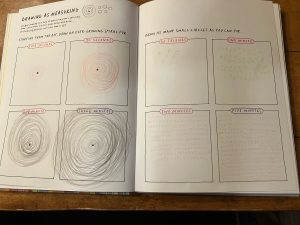
If I was to create a schema for the vacation log, I would create a bar graph that represents the number of stops at a specific location. For example, I would utilize symbols for each location including rest stops, gas stops, food stops, restroom/potty stops, etc. I would then log the number of stops in each category by using lines/ticks. To complete the bar graph, the symbols would represent the horizontal values of the graph and the number of stops in each category would represent the vertical values completing a bar of different heights for each category.
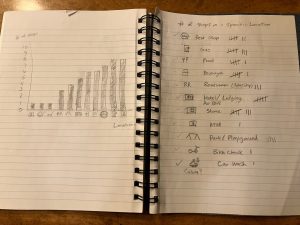
The three exercises that I will be completing for the Data Diaries project will be Exercise 2 (Birthdays), 15 (My Swearing), and 18 (Distractions).
